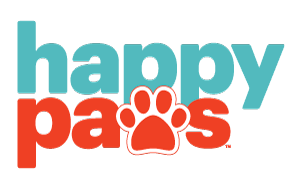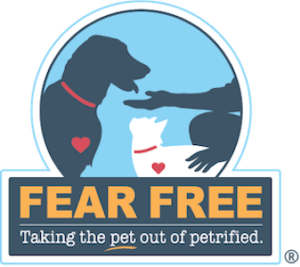Tracey L. Deiss, DVM
Dr. Robert Smith once said, “There are no safe anesthetic agents, there are no safe anesthetic procedures. There are only safe anesthetists.” 1
Even to the most seasoned and skilled members of a vet health care team, surgery and anesthesia can be the most stressful aspect of veterinary medicine. That’s because while procedures are common, the anesthetic experience is unique and individual to each patient, requiring a customized multimodal approach.1 The crème de la crème of tailored approaches includes pharmacologic and non-pharmacologic components. During the hustle and bustle of busy surgical and procedure days, it’s important to be mindful of patient comfort maximization. PAWS-ing to employ Fear Free techniques is not only advantageous to our patients but our team members as well. Anesthesia is not limited to the period of unconsciousness, but rather the entire perioperative journey beginning when the patient leaves their home and ending upon return. This is known as the Continuum of Care.2 Within the clinic, the continuum of care includes all four phases of anesthesia:
- Preanesthesia
- Induction
- Maintenance
- Recovery
In the preanesthetic period, assessing patient signalment, lifestyle, and concomitant medical conditions/risk and assigning an American Society of Anesthesiologists’ (ASA) status can set us and our patients up for success. Helpful reminder: It’s important to partner with our pet owners to assess and manage patient vet visit fear, anxiety, and stress prior to the anesthetic procedure, but when not possible, immediately upon hospital admittance. Blood work and IV catheter placement along with a multimodal pharmacologic plan including NSAIDs, opioids, alpha-2 agonists, and antiemetics starts our patients out on the right paw. Non-pharmacologic techniques adding to a tranquil ingress include soft lighting, quiet rooms, considerate approach along with nonslip and cozy surfaces, massage, calming music, touch gradients, and continuous monitoring of FAS levels.
Next comes customization of the induction and maintenance phases of anesthesia with a preoxygenation preamble. Preoxygenation is a sound habit for all patients and critical for respiratory compromised, thoracically impeded, and pregnant cases. 2 Because anesthetic masks can be menacing to our patients, removing the rubber seal, keeping a hiss free flow rate, and incorporating acupressure touch points can be helpful. Considering our patient’s level of sedation from preanesthetic medications is key when selecting induction drugs and level of maintenance inhalants. Knowing the mechanisms of action and pharmacologic effects of players in the anesthetic induction and maintenance game can help navigate each patient’s journey and predictive monitoring parameters. Keeping a close eye on any changes or fluctuations in patient status, physical and emotional, and adjusting with agility can maximize success for both patient and the veterinary team, allowing a tranquil transition to recovery phase.
While most of us sweat the induction and maintenance phases, it’s important to remember that between 47 percent and 60 percent of anesthetic-related complications and deaths occur in the recovery phase. Patient monitoring and care are crucial during recovery, so having a plan to ensure a smooth anesthetic emergence is essential. Prolonged or rough recoveries can harm the patient and the surgical site as well as compromise the cardiovascular and respiratory systems. 2
Pharmacologic agents selected in the perioperative period can be beneficial in the recovery period. In a clinical study, dogs receiving Cerenia ® (maropitant citrate) injectable for prevention of vomiting from emetogens, such as pure opioid agonists in the perioperative period, exhibited smoother recoveries and faster return to normal eating than dogs without Cerenia.3
In a study looking at Cerenia in the perioperative period, Cerenia-treated dogs recovered smoothly, meaning they were lying comfortably without vocalization or panting and had a relaxed posture. Two dogs in the placebo-treated group experienced a rough recovery in the first 30 minutes, characterized by thrashing, paddling, shaking, and vocalizing; 25 percent of placebo dogs recovered moderately, meaning they exhibited a hunched posture along with panting and frequently changed positions. 3
A smooth recovery is a win for the patient because it allows for a peaceful reentry into the conscious state and minimizes risk of patient, surgical site, or staff injury
Hearing the good news that their canine companion had a smooth recovery brings peace of mind to our clients. An uneventful recovery may also maximize the opportunity for our canine patient to be discharged sooner3, closing out our anesthetic continuum of care.
In summary, all four phases of the anesthetic continuum of care are vital to procedure success. With over 50 percent of complications occurring in the recovery phase, implementing Fear Free pharmacologic and non-pharmacologic tactics to help promote a smooth recovery is key. By preventing perioperative vomiting caused by opioids, Cerenia® (maropitant citrate) injectable as a component to a multimodal approach to anesthesia helps our canine patients recover more smoothly and comfortably. When it comes to a zen anesthetic experience, one size simply does not fit all.
To download emesis advisory board proceedings and learn more about Cerenia® (maropitant citrate) injectable for prevention of vomiting from emetogens like opioids, visit relievePOV.com.
IMPORTANT SAFETY INFORMATION: Use CERENIA Injectable subcutaneously for acute vomiting in dogs 2 to 4 months of age or either subcutaneously or intravenously in dogs 4 months of age and older. Safe use has not been evaluated in dogs with gastrointestinal obstruction, or those that have ingested toxins. Use with caution in dogs with hepatic dysfunction. Pain and vocalization upon injection is a common side effect. In people, topical exposure may elicit localized allergic skin reactions, and repeated or prolonged exposure may lead to skin sensitization. See full Prescribing Information, CereniaPI.com.
- Smith RM. Smith’s anesthesia for infants and children. St. Louis: Mosby; 1959.
- 2020 AAHA Anesthesia and Monitoring Guidelines for Dogs and Cats.
- Ramsey, D, et al., Int J Appl Res Vet Med, 2014.
This article was reviewed/edited by board-certified veterinary behaviorist Dr. Kenneth Martin and/or veterinary technician specialist in behavior Debbie Martin, LVT.


 Brought to you by our friends at Zoetis. ©2022 Zoetis Services LLC. All rights reserved. CER-00594
Brought to you by our friends at Zoetis. ©2022 Zoetis Services LLC. All rights reserved. CER-00594



